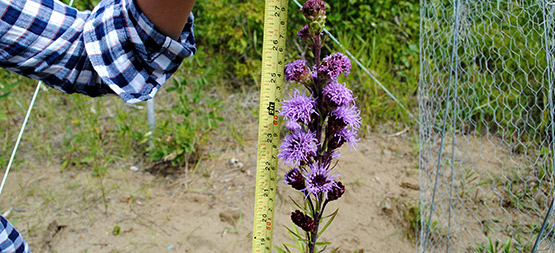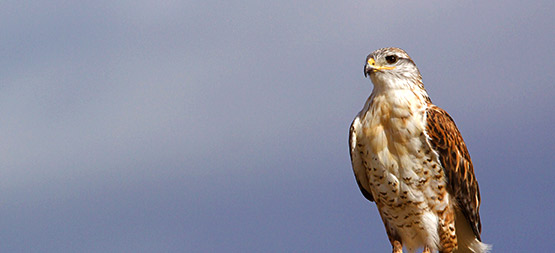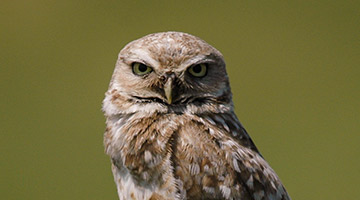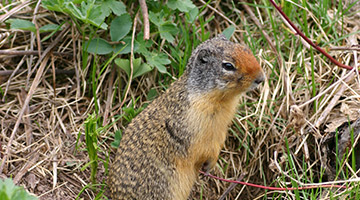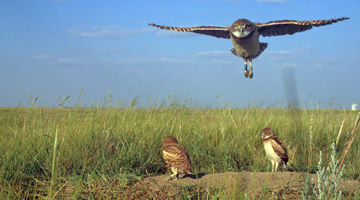Extreme Weather & Grassland Birds
One prediction for climate change in Alberta is an increase in the frequency and intensity of extreme weather events like extreme rainfall and wind storms. The nesting success of Burrowing Owls and Ferruginous Hawks, two threatened birds in Alberta’s Grassland region, is sensitive to these events.
We used detailed weather data, including the timing and location of storm events, to learn more about the impacts of extreme weather on the nesting and foraging behaviours and nest success of Ferruginous Hawks. Our collaborative field research also tested whether targeted interventions such as supplemental feeding of Burrowing Owl chicks and installation of artificial nest platforms for Ferruginous Hawks can improve chick survival and nest success. Ultimately, these strategies could help mitigate the risks imposed by potential increases in extreme weather on these iconic Grassland birds.
This research was done in collaboration with the Raptor Ecology and Conservation team (REACt) at the University of Alberta. REACt is supported by: University of Alberta, Government of Canada (Canadian Wildlife Service/Environment Canada, Interdepartmental Recovery Fund, National Sciences and Engineering Research Council of Canada, Agriculture and Agri-food Canada, Department of Defense CFB Suffield), Cenovus, NExen, Altalink, Suncor, IHS, Petroleum Technology Alliance of Canada, Alberta ESRD, Alberta Sport, Recreation, Parks and Wildlife Foundation, Alberta Conservation Association, Saskatchewan Ministry of the Environment.
